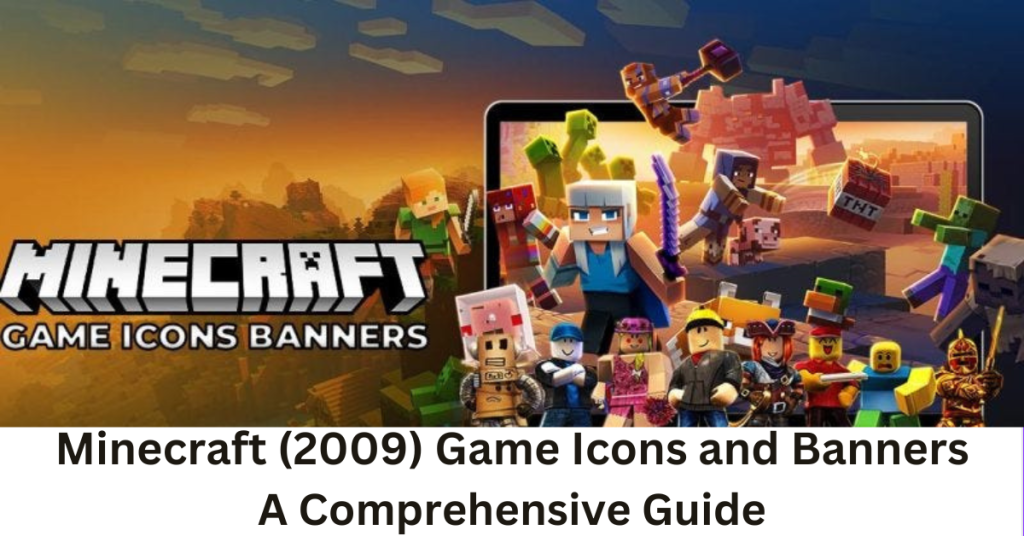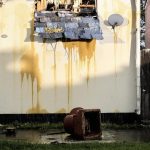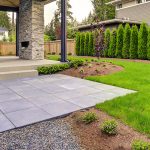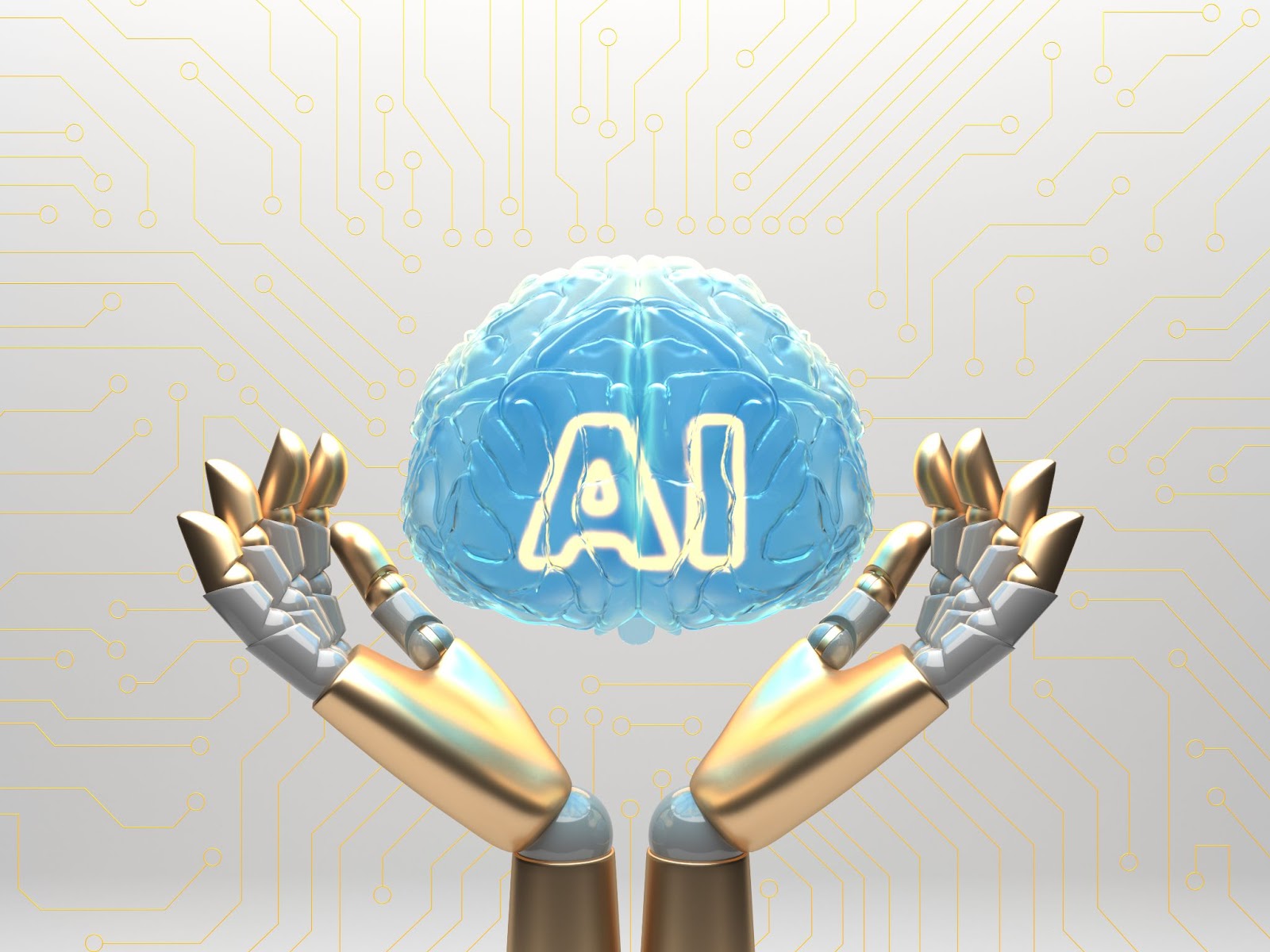
Minecraft, launched in 2009, has grown from a simple sandbox game into a cultural phenomenon. Over the years, its unique graphics and visual style have become iconic. In this article, we will explore the evolution of Minecraft’s game icons and banners, their significance, and how they have contributed to the game’s identity.
The Birth of Minecraft and Its Early Visuals
When Minecraft first emerged in 2009, it was a simple yet innovative game created by Markus Persson, also known as “Notch.” Its initial graphics were basic, with pixelated textures that harkened back to the retro games of the 1980s and 1990s. This design choice wasn’t just a limitation of technology but a deliberate aesthetic that gave Minecraft its distinct look and feel.
The early game icons reflected this minimalistic style. The most recognisable icon from Minecraft’s early days is the “Grass Block” icon. This block, featuring a patch of green grass on a dirt cube, quickly became synonymous with Minecraft. It symbolised the game’s endless building possibilities and its vast, procedurally generated worlds.
Evolution of Minecraft Game Icons
As Minecraft evolved, so too did its game icons. With each update and new version, Mojang, the game’s developer, introduced new icons that represented different aspects of the game. For example, when Minecraft transitioned from its alpha and beta stages into a full release, the game icon was updated to reflect a more polished design.
In 2011, the “Minecraft Cube” icon was introduced. This icon featured a more refined version of the original Grass Block, with sharper edges and a slight 3D effect. This change signified the game’s move towards a more defined and professional visual identity as it grew in popularity.
Over the years, Mojang has continued to update Minecraft’s icons to reflect the game’s ongoing development. With each major update, new icons are added to represent new features, blocks, or biomes introduced into the game. This practice keeps the game’s visuals fresh and exciting and helps players quickly identify new content.
The Role of Banners in Minecraft
Banners were first introduced to Minecraft in version 1.8, released in September 2014. These decorative items allowed players to add a personal touch to their builds, representing everything from national flags to custom designs. Banners quickly became a beloved feature, allowing players to express their creativity and individuality within the game.
Crafting banners in Minecraft involves using a combination of dyes and patterns. Players can create custom designs by arranging these dyes and patterns on a crafting table. The possibilities are nearly endless, with thousands of unique banner designs.
Banners also play a crucial role in Minecraft’s multiplayer mode. They can mark territory, represent factions or guilds, or be used as waypoints to help players navigate the game’s vast worlds. This functionality has made banners an integral part of Minecraft’s community-driven gameplay.
The Impact of Icons and Banners on Minecraft’s Identity
Minecraft’s icons and banners have become more than just visual elements within the game; they have become symbols of the game’s identity. The recognisable Grass Block icon is now synonymous with Minecraft and is instantly recognisable to gamers and non-gamers alike.
Similarly, banners have become a way for players to express their identity within the game. They are a means of personalisation and self-expression, allowing players to leave their mark on the game’s world. This ability to customise and personalise the game has helped make Minecraft one of the most beloved and enduring games of all time.
Designing Your Minecraft Banners
One of the most exciting aspects of Minecraft is the ability to create and design your banners. The game’s crafting system allows players to experiment with different colours, patterns, and shapes to create unique designs. Whether you’re designing a banner for your castle, a pirate flag for your ship, or a simple welcome sign for your village, the possibilities are endless.
To create a banner in Minecraft, you’ll need a few basic materials:
- Wool: Wool is the base material for all banners. You can dye wool in various colours to create the background colour for your banner.
- Sticks: You’ll need sticks to craft the banner itself.
- Dyes: Dyes are used to create different patterns and designs on your banner. There are 16 different colours of dye in Minecraft, each representing a different colour.
Once you’ve gathered your materials, you can start crafting your banner. Place the wool and stick in the appropriate pattern on the crafting table to create a blank banner. Then, use your dyes and patterns to create your custom design.
Popular Minecraft Banner Designs
Minecraft players have created countless unique and creative banner designs over the years. Some of the most popular designs include:
- National Flags: Players often create banners representing their country or favourite nation. These designs can range from simple stripes to more intricate patterns that resemble actual flags.
- Creeper Faces: The Creeper, one of Minecraft’s most iconic mobs, is a popular design choice for banners. Players can create a banner with the Creeper’s face using green and black dyes, creating a menacing yet recognisable design.
- Animal Designs: Animal-themed banners are also quite popular. Players often create banners featuring cats, dogs, or other animals using a combination of dyes and patterns.
- Medieval Crests: For players who enjoy a more medieval aesthetic, creating banners with crests and coats of arms is a popular choice. These designs often feature lions, dragons, and other heraldic symbols.
- Custom Logos: Some players create banners with custom logos or designs representing their in-game factions or guilds. These banners can be simple or intricate, depending on the player’s preferences.
How to Use Banners Effectively in Your Builds
Banners can add a unique touch to your Minecraft builds, but using them effectively requires some thought and planning. Here are a few tips for incorporating banners into your designs:
- Match Your Theme: Ensure your banner designs match the overall theme of your build. For example, if you’re building a medieval castle, use banners with heraldic designs or patterns that fit the medieval aesthetic.
- Use Contrasting Colours: Choose contrasting colours for your banners to make them stand out against your builds. This can help draw attention to specific areas or features of your build.
- Experiment with Patterns: Don’t be afraid to experiment with different patterns and designs. Mix and match different dyes and patterns to create unique and eye-catching banners.
- Use Banners as Waypoints: In large builds or multiplayer servers, banners can be used as waypoints to help players navigate. Place banners at key locations to guide players or mark important areas.
- Combine Banners with Other Decorations: Banners can be combined with other decorations, such as signs, paintings, or item frames, to create more detailed and immersive environments.
The Future of Minecraft Icons and Banners
As Minecraft continues to evolve, so will its icons and banners. With each new update, Mojang introduces new blocks, items, and features, many of which come with their unique icons. This continuous evolution ensures that Minecraft remains fresh and exciting, with new visuals to discover and explore.
Banners, too, will likely continue to play a significant role in the game. As players continue to push the boundaries of creativity and design, new banner designs and patterns will emerge, keeping the game dynamic and engaging.
Frequently Asked Questions
- What are Minecraft icons? Minecraft icons are visual representations used within the game to symbolise different items, blocks, or features. They are essential in helping players quickly identify various game elements.
- How do you create a banner in Minecraft? To create a banner in Minecraft, you’ll need wool, sticks, and dyes. Use a crafting table to combine these materials and create your banner. Then, use the dyes to add patterns and designs.
- What is the most popular Minecraft icon? The most popular Minecraft icon is arguably the Grass Block icon. It is one of the game’s most recognisable symbols and has become synonymous with Minecraft.
- Can you customise banners in Minecraft? Yes, you can customise banners in Minecraft. By using different dyes and patterns, players can create unique banner designs that reflect their style and preferences.
- How are banners used in Minecraft multiplayer? In Minecraft multiplayer, banners can represent factions or guilds, mark territories, or serve as waypoints to help players navigate.
- Are there any restrictions on banner designs in Minecraft? There are no strict restrictions on banner designs in Minecraft, but players are limited by the number of patterns and dyes they can use on a single banner. The game allows up to six patterns on one banner.
- What updates have been made to Minecraft icons over the years? Minecraft icons have been updated several times to reflect new game content, features, and changes in design style. These updates ensure the game remains fresh and visually appealing.
Conclusion
Minecraft’s game icons and banners are more than just decorative elements; they are integral to the game’s identity and player experience. From the iconic Grass Block to the countless custom banner designs, these visual elements have helped shape Minecraft into the beloved game it is today. As the game continues to evolve, we can expect even more exciting and creative uses for icons and banners in the future.









